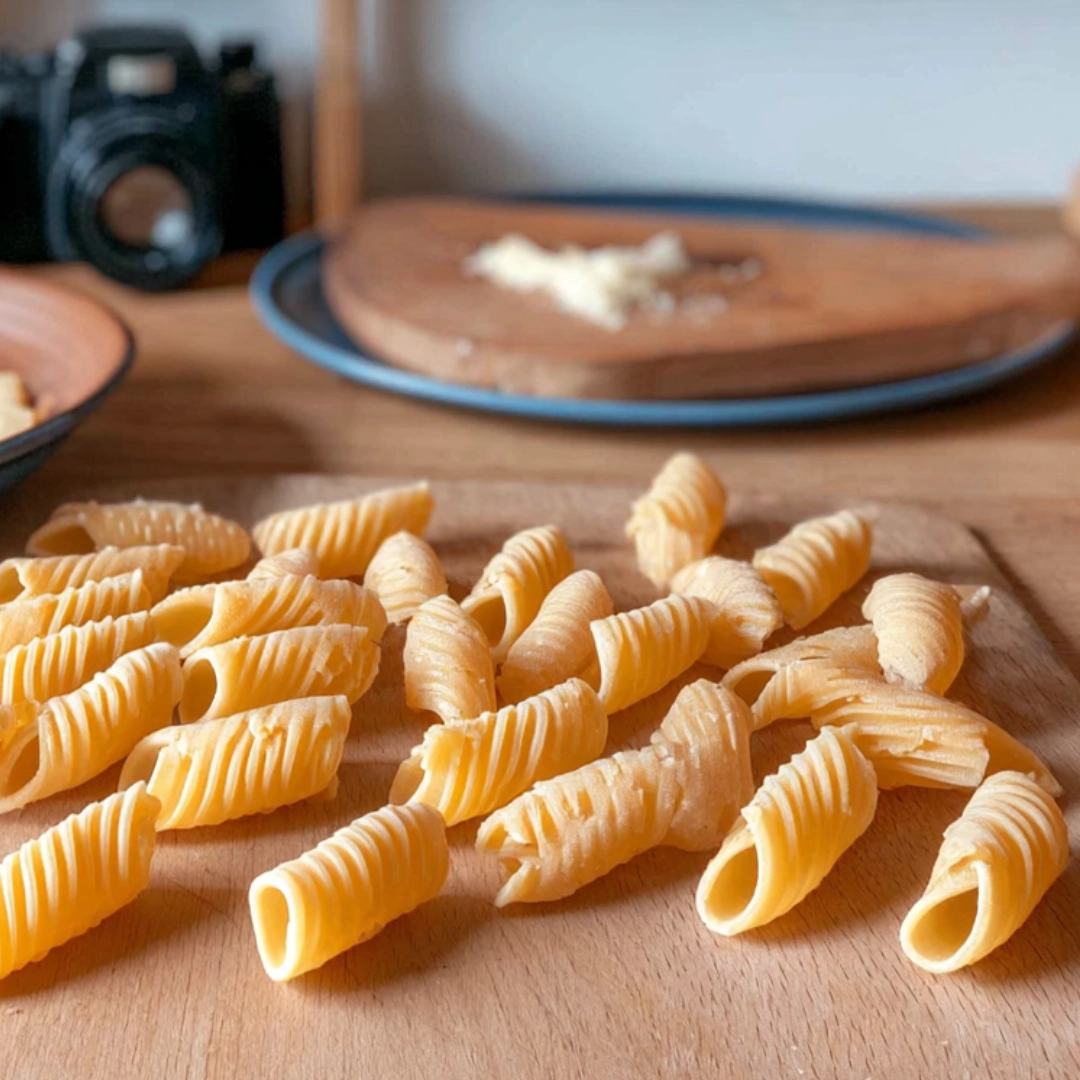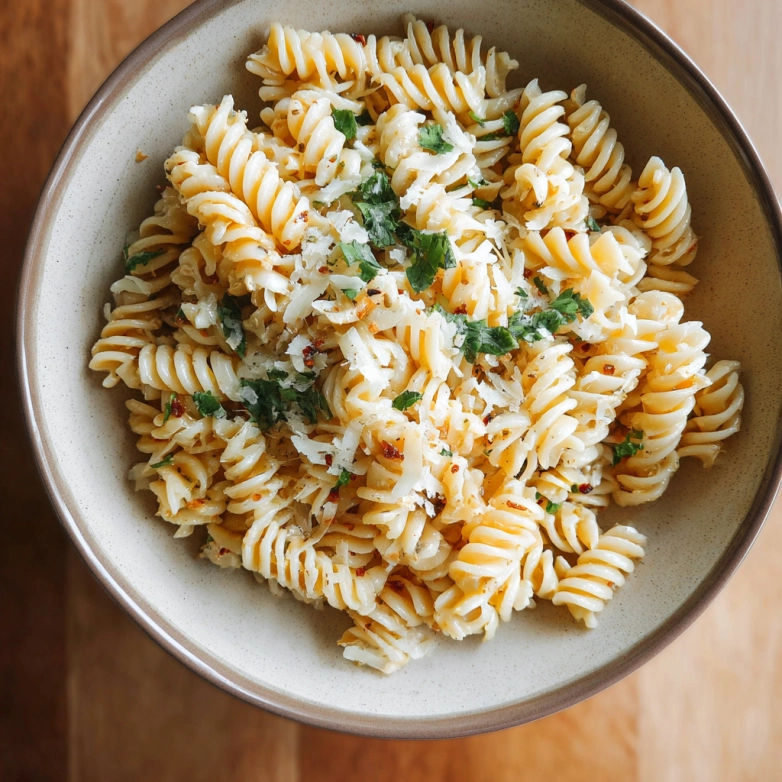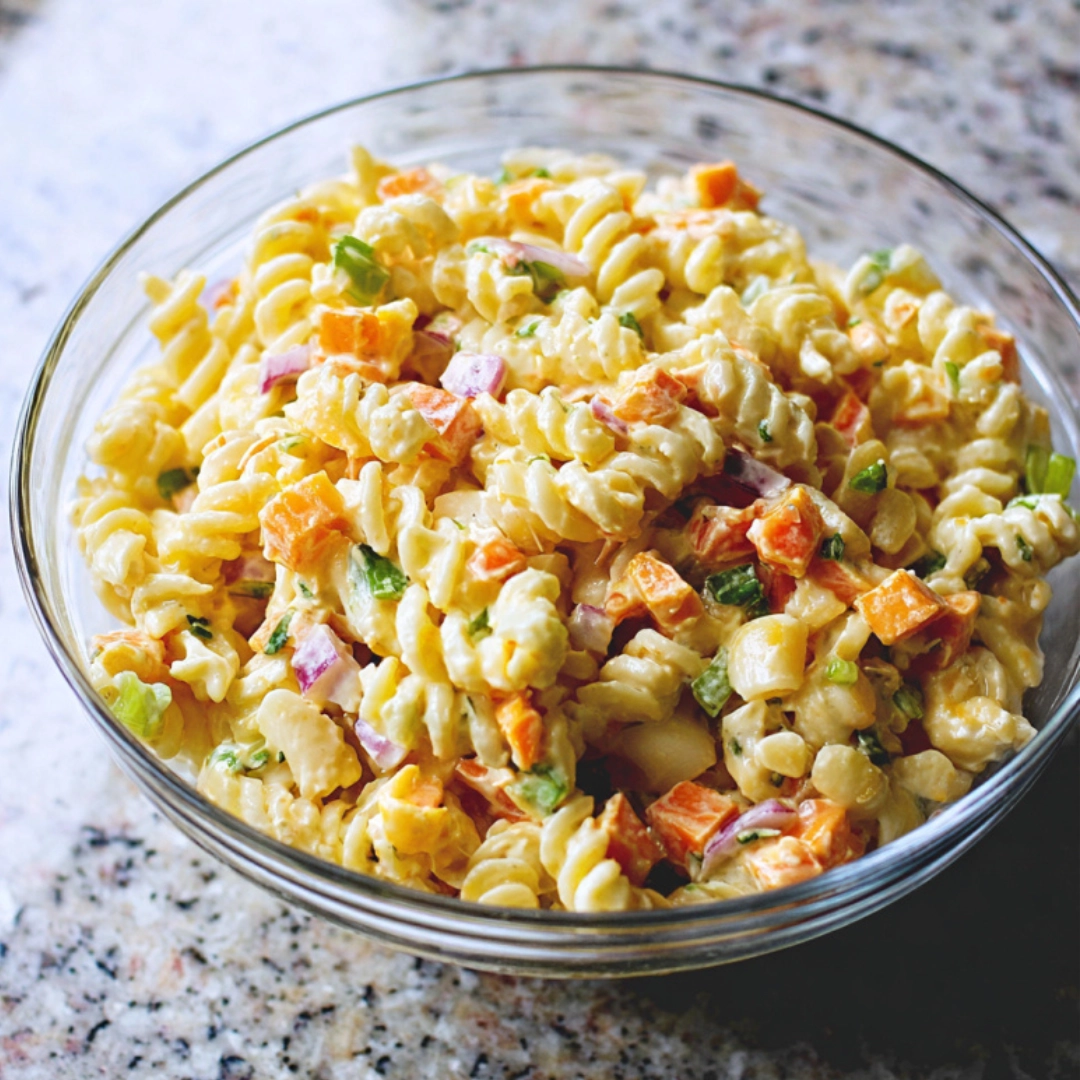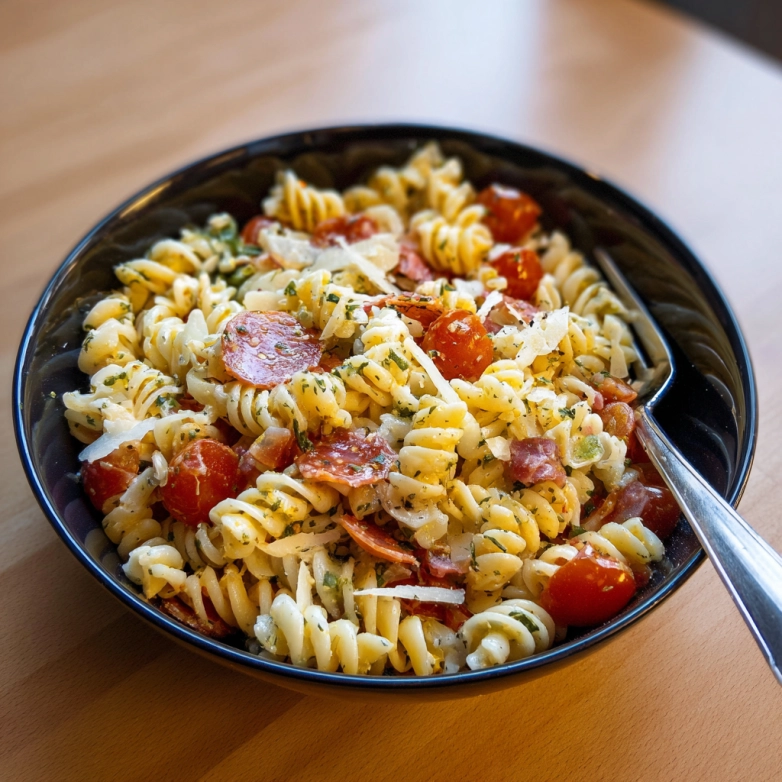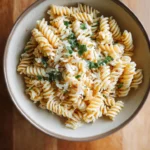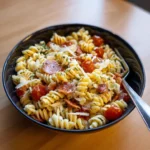Garganelli is a traditional Italian pasta that’s fun to make and perfect for sauce lovers. Formed from small squares of fresh dough rolled around a dowel on a ridged board, it creates a delicate tube with grooves that cling to every bite. In this guide, you’ll learn how to shape it step by step, how to store it, and which sauces bring out its best qualities.
Table of Contents
Garganelli, the Handmade Shape That Holds Flavor
Garganelli has a story behind every roll. I first saw it shaped by hand on a pasta show, and it reminded me of quiet afternoons in my aunt’s kitchen. The way each square transforms into a tube with just a board and a stick felt like magic.
This pasta may look like penne at a glance, but it’s rolled rather than extruded. That process gives it a more rustic feel and a surface that holds onto sauces better than smooth shapes. The name comes from its tube-like structure, inspired by old traditions from northern Italy.
I often serve it with smooth, rich sauces that complement its texture. Try it with Lemon Parmesan Pasta for something bright and creamy or go with Cowboy Butter Chicken Linguine when you want bold and hearty.
Next, I’ll guide you through how to make this pasta at home, with just a few tools and some basic dough.
How to Make Garganelli Step by Step
Garganelli is a hands-on pasta shape, and once you learn the rhythm of rolling and pressing, it becomes almost meditative. The process starts with fresh egg dough, rolled slightly thicker than you would for fettuccine or ravioli. This gives the pasta enough structure to hold its shape after cooking.

Start by rolling out the dough until it’s about a number 5 setting on a pasta machine. Use a knife or pasta cutter to slice the sheets into small squares, around 4 to 5 centimeters each. Let them rest for 3 to 5 minutes. This slight drying helps the dough stay firm during shaping.
Place a square on your gnocchi board, turned diagonally to make a diamond shape. Set a small wooden dowel or clean pencil at the bottom corner. Roll it up, pressing gently so the top corner seals against the outside. Roll once or twice more to create texture, then slide the finished piece off the dowel. You now have one perfect garganelli.
Set each piece on a parchment-lined tray dusted with semolina. This keeps them from sticking and helps dry the shape slightly. Once you’ve made your full batch, leave them uncovered for about an hour. This light drying step helps them hold up during boiling.
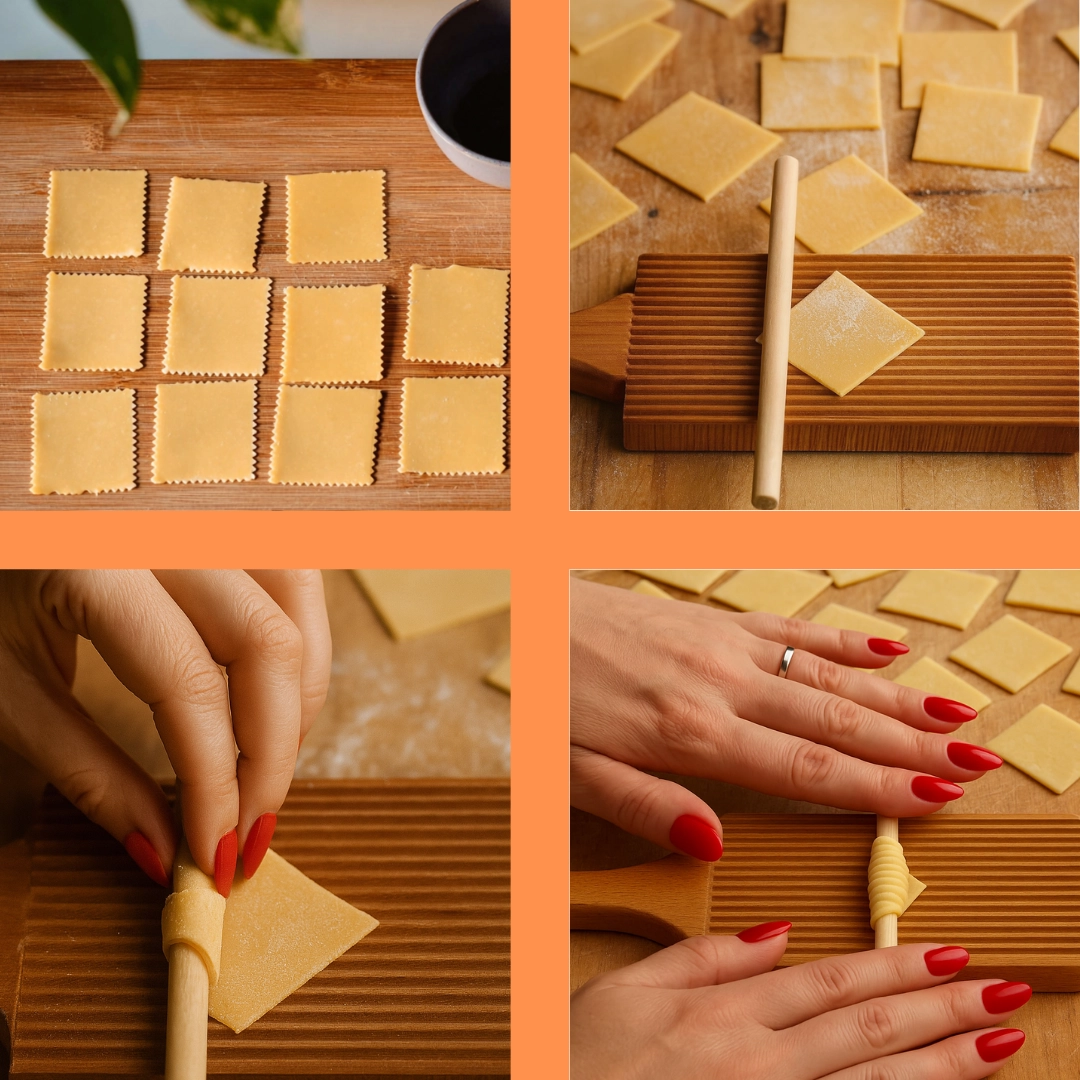
Want to try another handmade shape next? My Mushroom Pappardelle uses the same dough and pairs beautifully with creamy sauces. Or go with something quicker like Orzo Pasta Salad if you’re looking for a chilled dish with bold flavor.
Coming up next, I’ll walk you through how to store, freeze, and cook garganelli so it holds its shape and texture when it hits the boiling water.
Cooking and Storing Garganelli the Right Way
Garganelli doesn’t just look impressive, it also cooks quickly and holds up beautifully when stored properly. If you follow a few simple steps, you’ll enjoy perfectly shaped pasta every time — whether fresh, dried, or frozen.
After shaping, let the pasta sit uncovered for about 1 hour. This light drying helps it keep its ridged form during cooking. If you’re not using it the same day, let it dry for 2–3 hours, then transfer to an airtight container. It will stay fresh on the counter for up to a week, though texture is always best within the first few days.
To freeze, arrange the pasta on a tray and place it in the freezer for 20 minutes until firm. Then transfer it to a freezer bag or container. Cook directly from frozen, no need to thaw.
When it’s time to cook, bring a large pot of salted water to a rolling boil. Garganelli only needs about 2 to 3 minutes if fresh. If frozen, give it an extra minute. Test one piece to make sure it’s tender but still has a gentle bite.
Once cooked, transfer it directly to your sauce using a strainer or slotted spoon. Let it simmer together for a minute to help the flavors blend. This step also allows the starch from the pasta to lightly thicken the sauce.
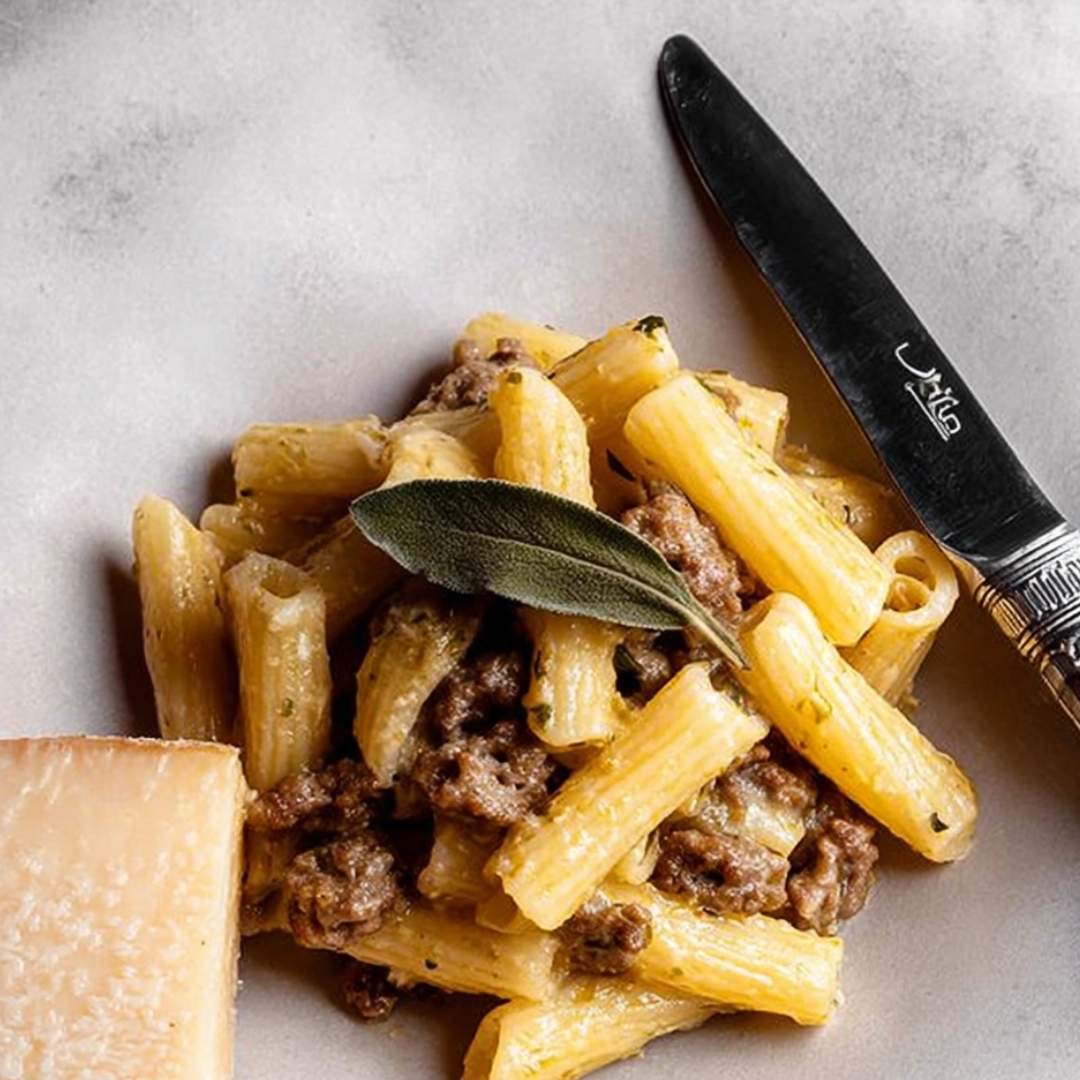
Pairing it with a rich sauce like Creamy Broccoli Pasta brings out its texture, while something like French Onion Pasta adds depth and comfort.
Next, I’ll answer common questions people have about this pasta — from how it compares to penne to the right way to pronounce it.
Conclusion
Making garganelli at home is more than a recipe — it’s an experience. From rolling the dough to watching each ridged tube take shape, the process is both creative and comforting. This traditional pasta holds sauce beautifully, bringing rich flavor to every bite whether paired with something creamy, spicy, or fresh.
With just a few tools and some patience, you can bring the taste of northern Italy into your own kitchen. Don’t worry about perfect shapes. What matters most is the love and intention behind each roll.
If you’re ready to try other unique pasta creations, explore Pappardelle Pasta or something chilled and bold like Italian Tortellini Pasta Salad.
Love simple, delicious meals like our kielbasa pasta recipes? Don’t miss a bite!
Follow us on Facebook for daily comfort food inspiration, quick dinner ideas, and crave-worthy dishes: Flavour Recipe Facebook
Join us on Pinterest for stunning food boards, meal prep tips, and family favorites: Flavour Recipe Pinterest
Let’s whip up something amazing together!
FAQs About Garganelli Pasta
What’s the difference between penne and garganelli?
While both are tube-shaped, penne is typically machine-extruded with smooth or angled ends. Garganelli is rolled by hand from pasta squares using a gnocchi board and a dowel, which creates a visible seam and ridges along the outside. These ridges help hold sauce better, giving garganelli an edge when it comes to texture and flavor absorption.
What does garganelli mean in Italian?
The word comes from “garganel,” an old Italian term that refers to the throat or windpipe. It describes the tube-like shape of the pasta, which is formed by rolling each square into a cylinder. The name reflects both its appearance and its roots in northern Italian culinary tradition.
What sauce goes with garganelli?
This shape pairs beautifully with sauces that cling. Creamy, chunky, or oil-based options all work well. For a light dish, try it with Pasta al Pesto or toss it with grilled chicken and olive oil. If you’re craving something bold, go for Sausage Broccoli Pasta. The ridges of garganelli catch herbs, garlic, and cheese in every bite.
How do you pronounce garganelli pasta?
It’s pronounced gar-gah-NELL-ee. Emphasis falls on the third syllable, which gives it a natural rhythm that’s as satisfying to say as it is to cook.
Garganelli Pasta: Easy Homemade Guide for This Traditional Italian Shape
Traditional garganelli pasta made from scratch using fresh dough, shaped by hand and perfect with any sauce.
- Prep Time: 40 minutes
- Cook Time: 3 minutes
- Total Time: 1 hour 30 minutes
- Yield: 4 servings 1x
- Category: Homemade Pasta
- Method: Boiling
- Cuisine: Italian
- Diet: Vegetarian
Ingredients
- 1 batch fresh pasta dough (with semolina)
- 1 cup semolina flour for dusting
- 1 gnocchi board
- 1 small wooden dowel or clean pencil
- Parchment paper
- Water and salt for boiling
Instructions
- 1. Roll pasta sheets to setting 5 on a pasta machine.
- 2. Cut into 4–5cm squares.
- 3. Let dough squares rest for 3–5 minutes.
- 4. Place each square on a gnocchi board, turned like a diamond.
- 5. Roll from one corner over the dowel, press gently to seal.
- 6. Slide off shaped garganelli and place on parchment-lined tray.
- 7. Let dry for 1 hour or freeze for later use.
- 8. Boil in salted water for 2–3 minutes or until tender.
- 9. Toss gently with sauce and serve warm.
Notes
- Drying the pasta helps maintain its shape while cooking.
- Cook straight from frozen without thawing.
- Pairs beautifully with both light and creamy sauces.
Nutrition
- Serving Size: 1 cup
- Calories: 320
- Sugar: 1g
- Sodium: 15mg
- Fat: 3g
- Saturated Fat: 1g
- Unsaturated Fat: 2g
- Trans Fat: 0g
- Carbohydrates: 60g
- Fiber: 2g
- Protein: 10g
- Cholesterol: 93mg
Nutrition Disclaimer: The nutrition information provided in the Recipe card is an estimate only.For the most accurate results, please calculate the values yourself using your preferred nutrition calculator.

